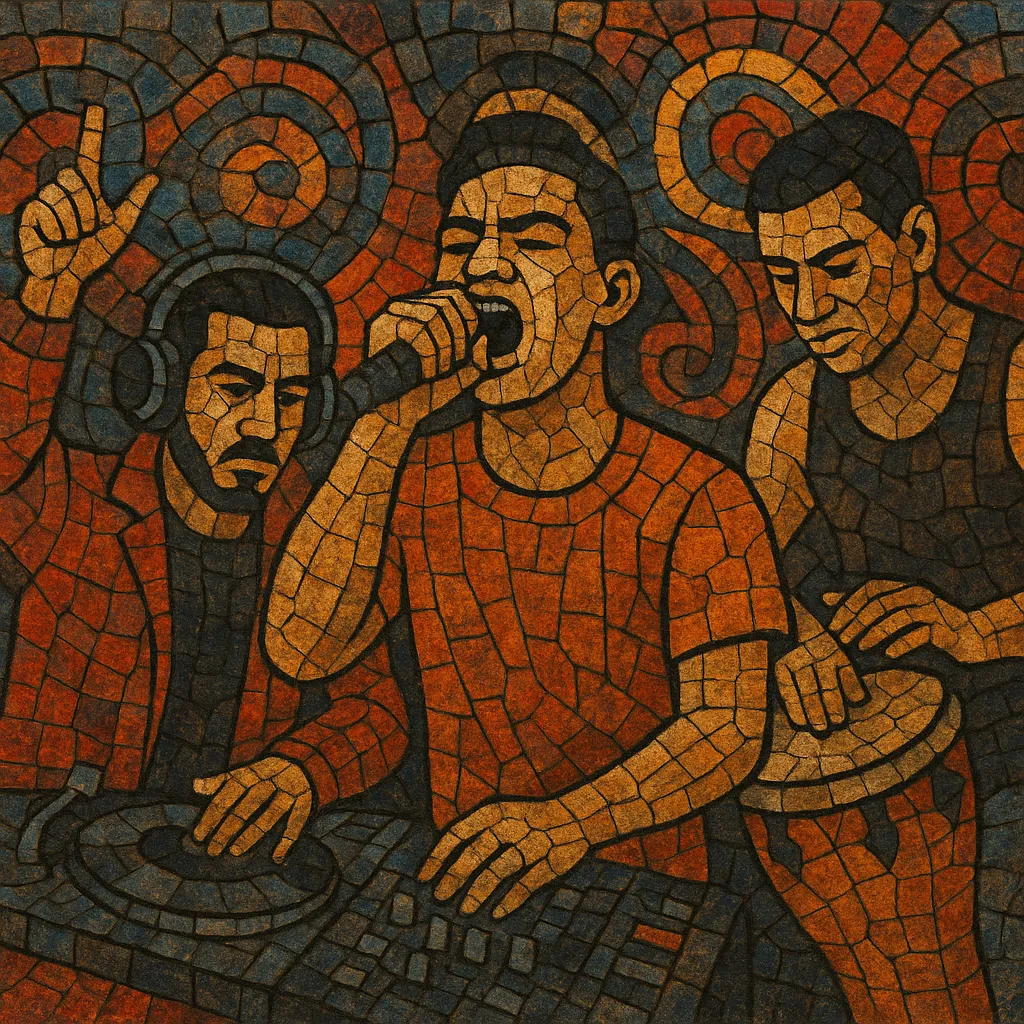Mahraganat (often called electro-shaabi or "festival music") is a high-energy Egyptian street style that fuses traditional shaabi party music with DIY electronic production, rap-like vocal delivery, and booming dance rhythms. It grew out of working-class wedding scenes and neighborhood celebrations, where portable sound systems, cracked software, and affordable microphones enabled a raw, urgent sound.
The music is built on pounding darbuka-style percussion, sawtooth and reed-like synth leads that mimic mizmar timbres, heavy sub-bass, and heavily Auto-Tuned, shouted vocals. Lyrics mix humor, social commentary, bravado, and everyday slang, creating a direct line to the lived experiences of Cairo’s peripheries. The result is a gritty, infectious, and unmistakably local club sound that’s also globally legible.
Mahraganat emerged in the late 2000s in working-class neighborhoods of Greater Cairo (notably Salam City, Matareya, and Imbaba). Young DJs and MCs combined shaabi party aesthetics with inexpensive digital tools (often FL Studio), creating a rough, bass-heavy take on local wedding music. Early pioneers such as DJ Figo, MC Sadat, and Alaa Fifty Cent helped codify the style—fast percussion loops, piercing synths emulating mizmar, and shout-rap vocals.
As YouTube, Bluetooth phone sharing, and street weddings amplified the sound, mahraganat went viral. Tracks became anthems of urban celebrations and micro-neighborhood festivals (“mahragan” meaning festival). International attention followed through blogs, documentaries (e.g., “Electro Chaabi,” 2013), and club circuits, introducing global audiences to its raw, DIY aesthetic.
By the late 2010s, artists such as Hassan Shakosh, Omar Kamal, and Hamo Bika scored massive hits and chart placements, pushing the style into mainstream pop while keeping its street DNA. The genre also faced pushback from the Musicians’ Syndicate in Egypt over lyrical content and performance licensing, sparking debates about class, taste, and cultural legitimacy. Simultaneously, mahraganat hybridized with trap and rap, feeding into “trap shaabi” and influencing Egyptian and broader Arabic hip hop.
In the 2020s, mahraganat remains a dominant party soundtrack and an evolving production approach. Producers refine the sonic palette (cleaner mixes, tighter low-end), while MCs experiment with flows that sit between chanting, toasting, and rap. Its influence now radiates across Egyptian pop, Arabic hip hop, and club music worldwide.


